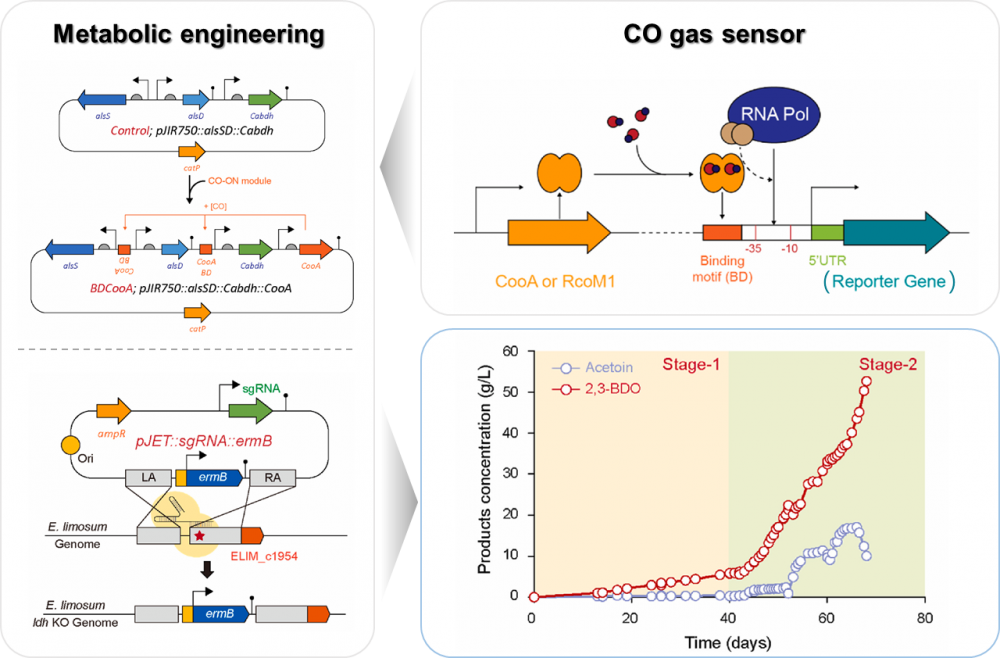
연구
Research Outcome
미래를 창조하는 포스텍 화학공학과
Metabolic engineering of acetogenic bacteria using CO gas-sensing transcriptional ON/OFF modules
- Title of paper
- Metabolic engineering of acetogenic bacteria using CO gas-sensing transcriptional ON/OFF modules
- Author
- [이정욱 교수 연구실] CO 감지 전사 모듈 기반 아세토젠 대사 개량을 통한 2,3-BDO 생산 향상
- Publication in journal
- Metabolic Engineering, 91: 290–301, 2025
- Publication date
- 20250510
[Abstract]
Dynamic sensing of gas substrates like toxic carbon monoxide (CO) in living microbial cells is often limited due to the lack of suitable biosensors. Here, we integrated the CO-binding transcription activators, CooA and RcoM1, with an O2-independent fluorescent reporter system, Halo-tag, to develop CO-sensing modules (ON/OFF) capable of detecting CO concentrations in the strictly anaerobic acetogenic bacterium Eubacterium limosum. Furthermore, we employed CooA as the CO-sensing ON module to activate the target genes for 2,3-butanediol (2,3-BDO) biosynthesis, achieving a 1.7-fold increase in 2,3-BDO yield. These results indicate that the CO-ON module effectively redirects carbon flux toward target product biosynthesis pathway in acetogens. However, during CO gas with glucose mixotrophic fermentation, lactate emerged as the predominant product. To enhance target pathway flux using the CO-ON module, we deleted the lactate pathway in E. limosum using CRISPR/Cas9. The resulting engineered strain showed an 18.5 % increase in carbon utilization for 2,3-BDO production under CO sensing culture conditions. This optimized platform strain subsequently produced approximately 52 g/L of 2,3- BDO during two stage CO-glucose mixotrophic fermentation. Our results provide orthogonal CO-sensing transcriptional regulatory modules for engineering metabolic pathways that efficiently convert CO into value-added biochemicals using acetogenic biocatalysts.
DOI: https://doi.org/10.1016/j.ymben.2025.04.012
LINK: https://www.sciencedirect.com/science/article/pii/S109671762500076X




